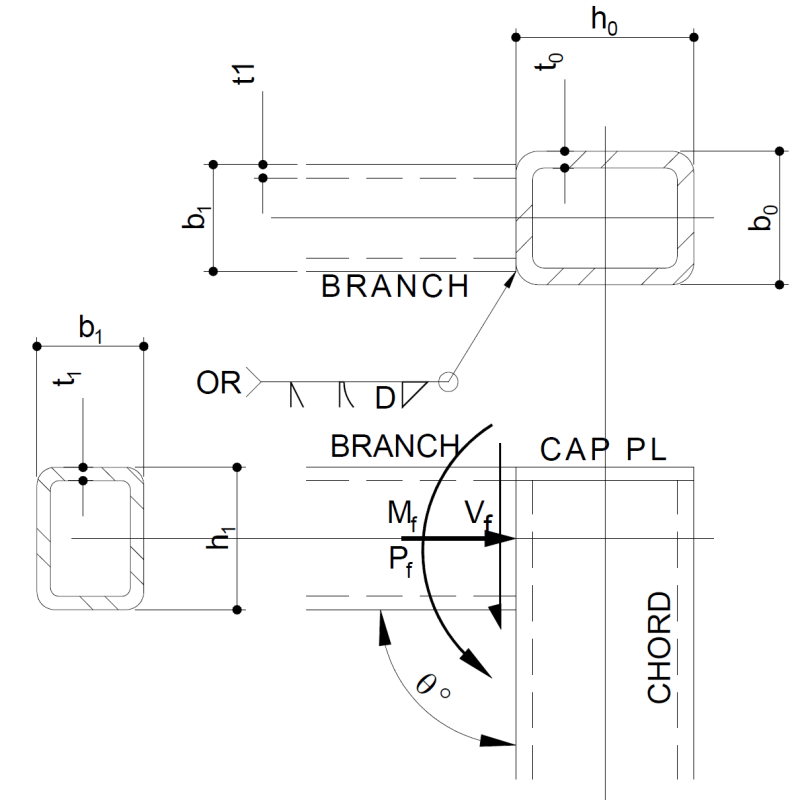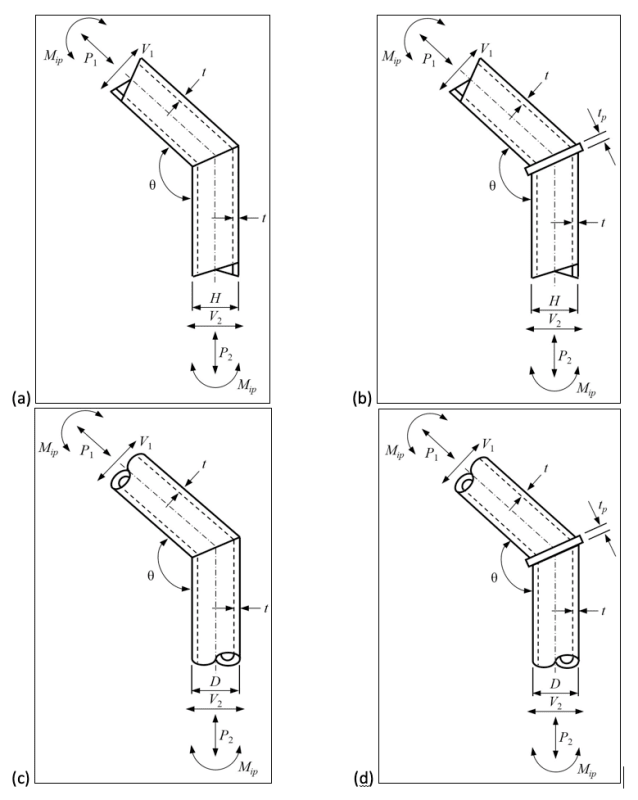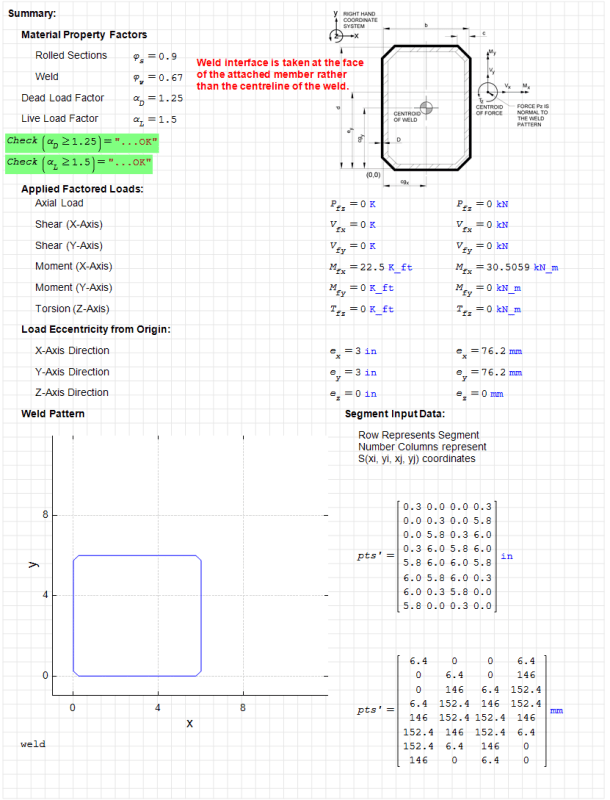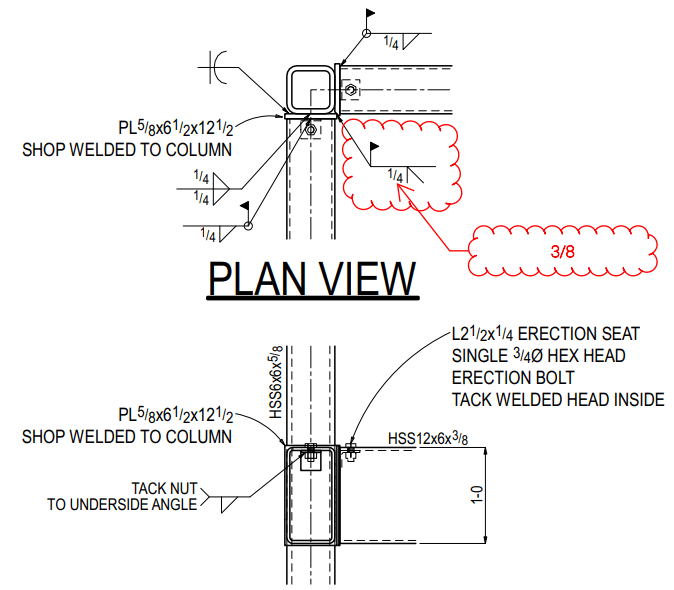dik:
I have never seen an example for this. I have run into it a few times but don't have an example that's anywhere near clean enough to share. Some thoughts follow. Hopefully they'll be helpful.
Assume the beam axial load is shared by all four walls on the basis of their areas. Assume the shear goes through the two vertical walls and the moment is resisted by a force couple between the top and bottom walls.
I typically make the cap plate wider than the column so it can be connected with fillet welds. The cap plate is usually overly thick to allow sufficient shelf dimension for the top wall-to-cap plate fillet weld.
Most of the checks are pretty vanilla, so I won't list them and bore you to death. Every time I've seen this, one of two things controls:
Column wall out-of-plane bending, aka plastification. I check this with the AISC Manual (15th ed.) Figure 9-5(a) and Eq. 9-30. Sometimes this controls by quite a bit, leading to through-plates like shown in DG24 Figure 4-4.
Weld strength at the beam bottom wall. Effective weld length from the AISC Spec. Eq. K1-1. That's a pretty short length sometimes, so it's often hard to make fillet welds work. Might need a CJP with backing instead -- then check the beam bottom wall for tensile yielding on that little effective length.
More thoughts:
Some checks are shown in the AISC DG24 Example 4.3.
The following also applies to the column wall strength at the beambottom flange: Web Local Yielding and Web Local Crippling from the AISC Spec. Sections J10.2 and J10.3, respectively. If there was another beam on the right in your figure then Web Compression Buckling from Section J10.5 would apply. Finally, don't forget Web Panel-Zone Shear from J10.6.





